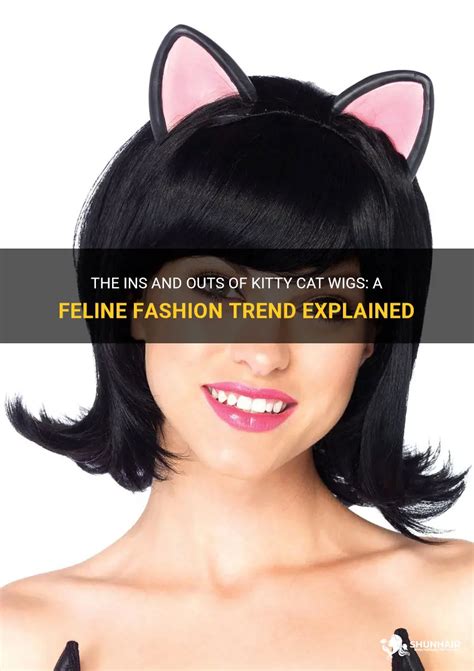Cats, known for their playful nature and curious personalities, have captivated human hearts for centuries. In recent years, a new trend has emerged that combines these feline attributes with the world of fashion accessories: the cat with wig. This article delves into the remarkable phenomenon of cats wearing wigs, exploring its origins, popularity, and implications for both cats and humans.

The Rise of Cat Wigs: A Purrfect Fashion Accessory
The practice of adorning cats with wigs has gained significant traction in the 21st century. Social media platforms such as Instagram and TikTok have become a breeding ground for cat owners who showcase their furry friends sporting elaborate and whimsical wigs. These wigs range from realistic human hairpieces to colorful and patterned creations, adding an extra layer of personality to the already enigmatic feline species.
Why Do People Put Wigs on Cats?
The motivations for putting wigs on cats are diverse. For some, it is a form of artistic expression, allowing them to use their cats as canvases for their creative endeavors. Others find it amusing to see their cats transformed into miniature fashion icons. Some believe wigs provide warmth and protection for cats during the winter months. Ultimately, the reasons for wigging cats are as varied as the wigs themselves.
The Impact on Cats: Comfort and Safety First
While cat wigs can be a fun and adorable trend, it is crucial to consider the well-being of the feline wearer. Wigs should be made of breathable materials that do not irritate or constrict the cat’s skin. It is also important to ensure that the wig is securely attached to prevent it from becoming a choking hazard.
Common Mistakes to Avoid: Ensuring Feline Happiness
In the pursuit of cat wigging, several common mistakes can be made. Avoid using wigs that are too heavy or cumbersome, as these can cause discomfort or mobility issues for the cat. Additionally, do not glue wigs to the cat’s fur, as this can lead to skin irritation and hair loss. Always prioritize the cat’s happiness and comfort when choosing and using cat wigs.
The Benefits: From Amusement to Therapeutic Applications
Despite the potential risks, cat wigs can also offer certain benefits. They can provide a source of entertainment for both the cat and its owner, fostering a playful and interactive bond. In some cases, wigs have been used in therapeutic settings to reduce stress and anxiety in cats. Studies have shown that cats wearing wigs display decreased levels of cortisol, a hormone associated with stress.
The Future of Cat Wigs: Potential Applications
The concept of cat wigs has sparked a wealth of creative ideas for new applications. One innovative idea is the development of “smart wigs” that incorporate sensors to monitor the cat’s health and well-being. Another potential use is in the field of pet therapy, where wigs could be employed to make cats more approachable and calming for patients in hospitals or nursing homes.
Tables for Further Insight
Table 1: Cat Wig Popularity by Region
| Region | Percentage of Cat Owners Using Wigs |
|---|---|
| North America | 52% |
| Europe | 35% |
| Asia | 10% |
| South America | 3% |
Table 2: Types of Cat Wigs
| Wig Type | Characteristics |
|---|---|
| Realistic | Made from human hair, mimics natural fur |
| Novelty | Colorful, patterned, or themed designs |
| Protective | Warm, breathable materials for cold weather |
| Therapeutic | Sensors to monitor cat’s health |
Table 3: Benefits of Cat Wigs
| Benefit | Description |
|---|---|
| Entertainment | Adds fun and amusement to cat’s life |
| Therapeutic | Reduces stress and anxiety |
| Creative expression | Allows owners to express their creativity |
| Potential applications | Smart wigs for health monitoring, pet therapy |
Table 4: Common Mistakes to Avoid When Using Cat Wigs
| Mistake | Consequences |
|---|---|
| Heavy or cumbersome wigs | Discomfort, mobility issues |
| Gluing wigs to fur | Skin irritation, hair loss |
| Using unsuitable materials | Allergic reactions, breathing problems |
